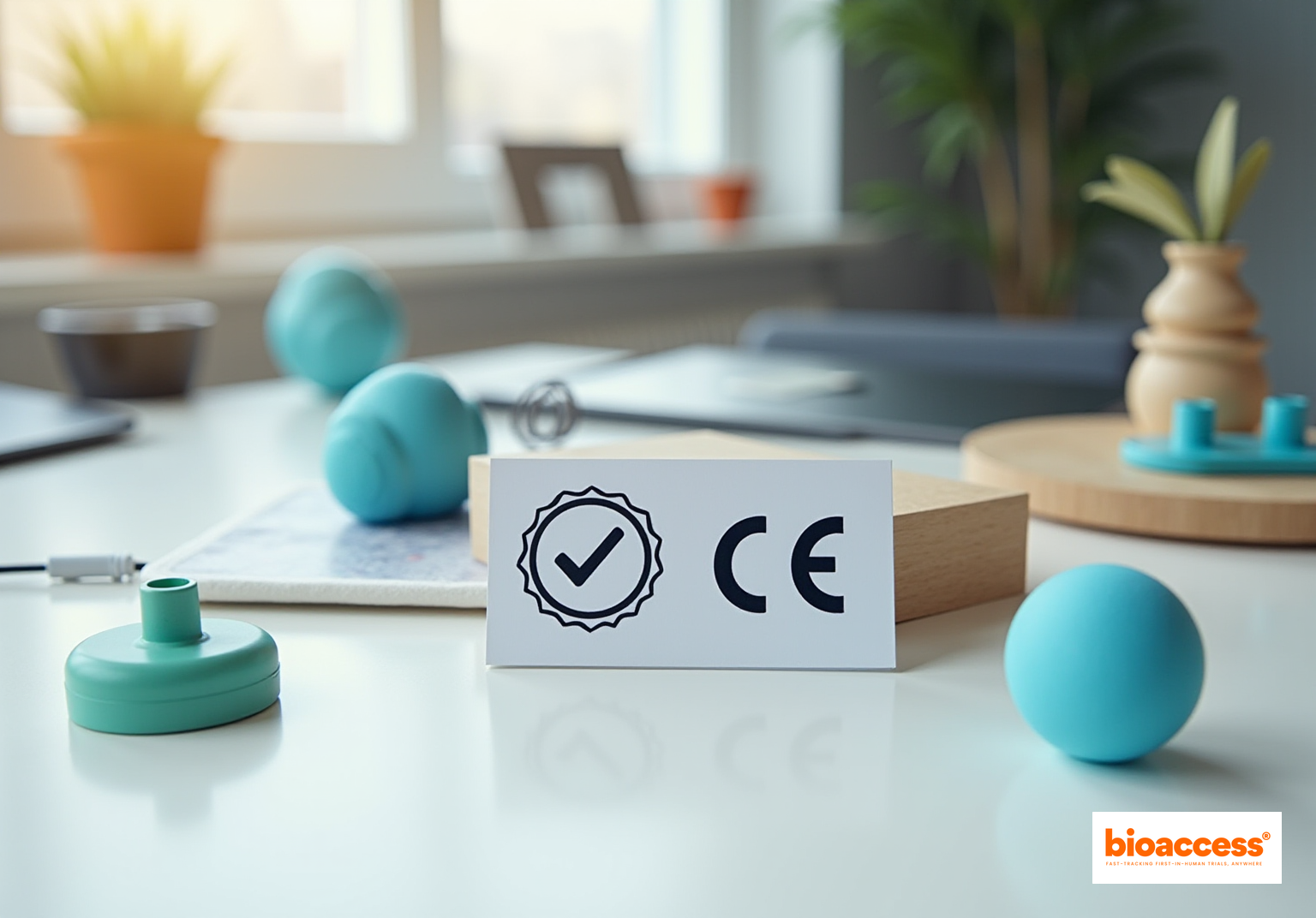


CE certification, or Conformité Européenne certification, is essential for products marketed within the European Economic Area. It guarantees adherence to health, safety, and environmental standards, functioning as a 'trade passport' for manufacturers. This article underscores its significance by:
Such insights illustrate its critical importance across various sectors, particularly in upholding product quality and safety.
The CE certification, or Conformité Européenne certification, stands as a vital benchmark for products marketed within the European Economic Area, ensuring compliance with essential health, safety, and environmental standards. This certification not only facilitates market access for manufacturers but also fosters consumer confidence by indicating adherence to rigorous EU directives.
As industries evolve and technology advances, it is imperative to consider how CE certification adapts to maintain its relevance and effectiveness in safeguarding product safety and quality.
The CE certification definition, also known as Conformité Européenne certification, is an essential marking for items sold within the European Economic Area (EEA). The CE certification definition signifies that a product meets critical health, security, and environmental protection standards as mandated by EU directives. The CE mark acts as a 'trade passport,' allowing manufacturers to market their goods across EU member nations without hindrance. This qualification is vital not only for ensuring consumer protection but also for maintaining high quality standards in a wide range of products, from medical devices to consumer goods.
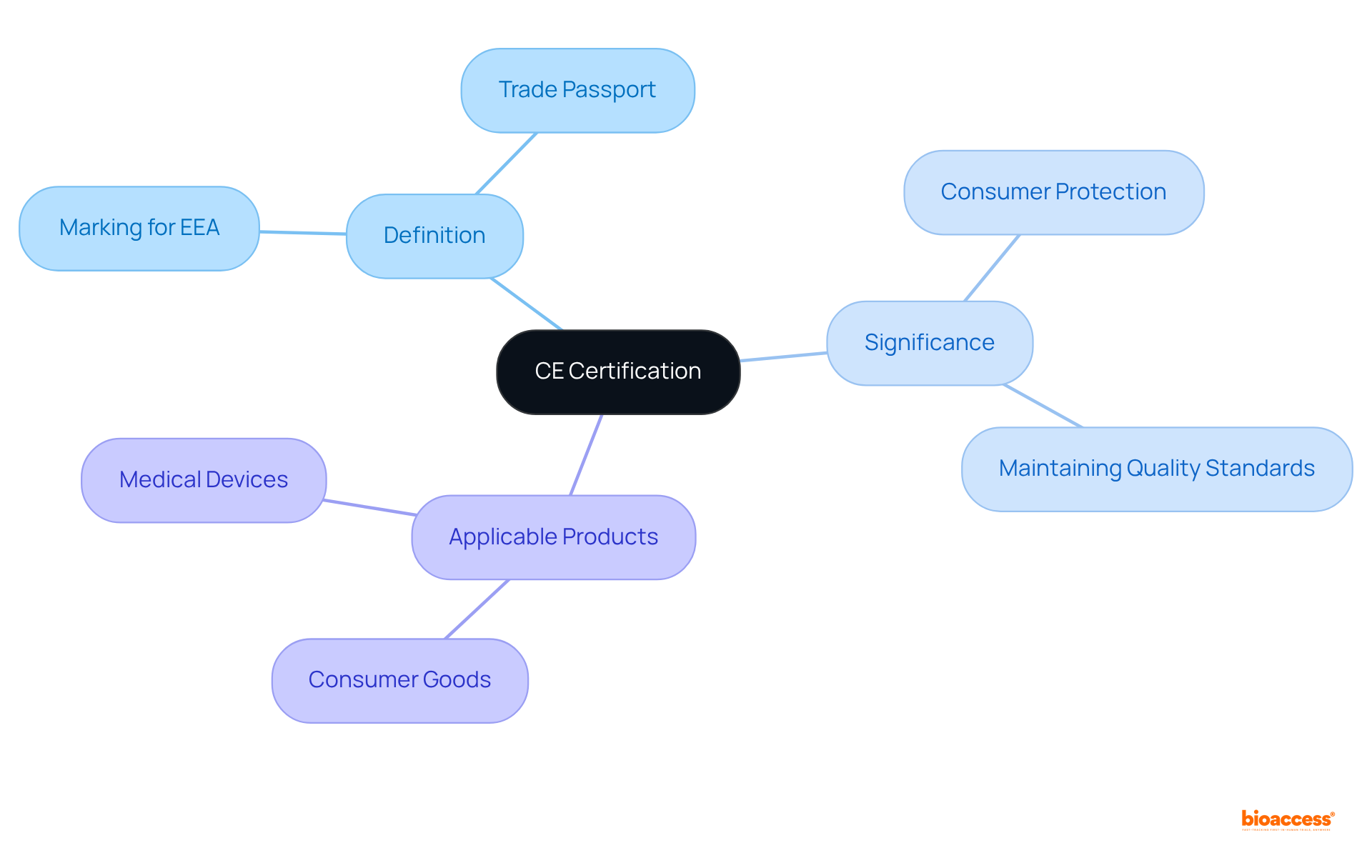
The origins of the CE certification definition can be traced back to the 1980s when the European Community sought to create a single market by removing trade barriers among member states. The Maastricht Treaty, signed in 1992, established the necessity for a cohesive approach to goods protection and compliance. Officially launched in 1993, the CE certification definition created a framework for evaluating conformity to EU directives.
Over the years, the extent of CE approval has broadened to encompass a diverse array of items, illustrating the EU's dedication to consumer protection and environmental conservation. Recent statistics reveal that the European single economy has experienced substantial growth, with the CE certification definition playing an essential role in enhancing safety and compliance across various sectors.
As noted by industry expert Joe Brown, 'A robust CE marking process not only ensures compliance but also fosters consumer trust in products.' Furthermore, case studies demonstrate how CE approval has evolved to meet new technologies and industry demands, highlighting its significance in the Medtech and Biopharma sectors. This evolution underscores the dynamic nature of regulatory standards in response to changing market demands and technological advancements.
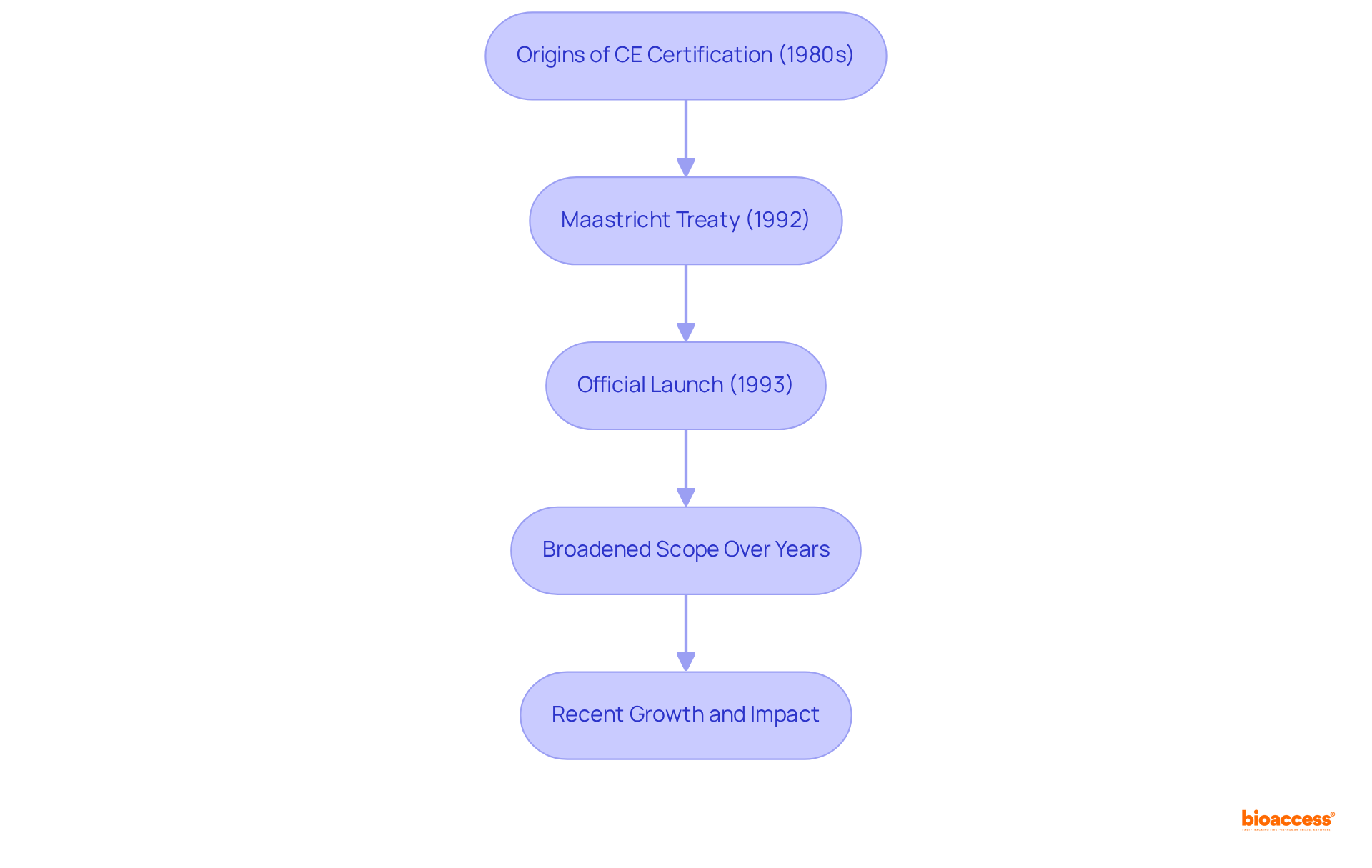
The key characteristics of the CE certification definition encompass the requirement for manufacturers to conduct a conformity assessment. This may involve testing and evaluation by a notified body, contingent upon the category of items. Additionally, manufacturers must prepare a Declaration of Conformity (DoC), which asserts that the item complies with all relevant EU directives. The CE mark must be affixed to the item, packaging, and accompanying documentation, ensuring both visibility and legibility. Furthermore, adherence to specific guidelines, such as the Medical Devices Regulation (MDR) or the Low Voltage Directive (LVD), is essential, depending on the category of item.
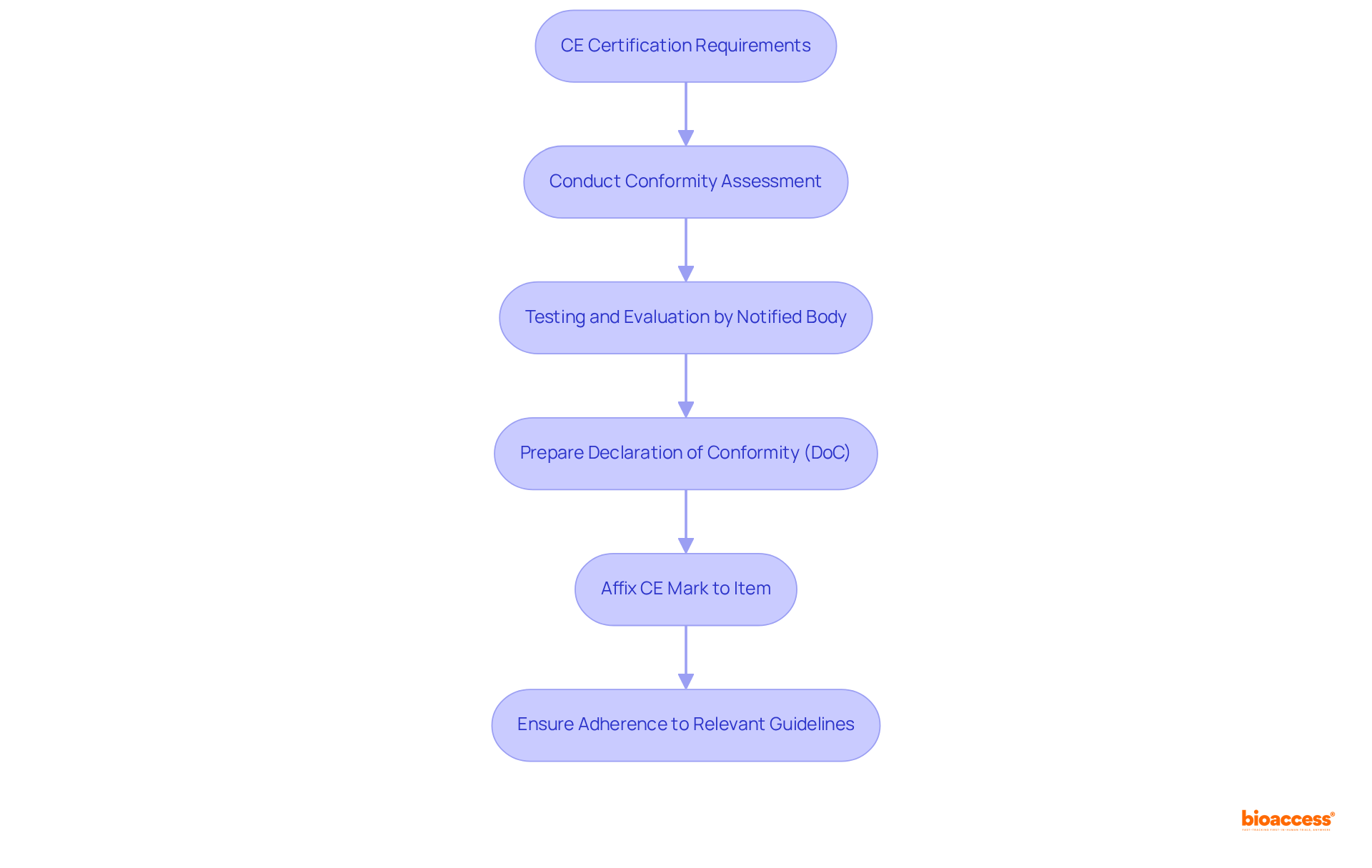
The CE certification definition plays a pivotal role in allowing manufacturers to enter the market, enabling them to distribute their goods throughout the EEA without facing additional obstacles. This accreditation not only enhances consumer confidence by ensuring that products meet stringent quality and safety standards but also helps clarify the CE certification definition, providing producers with a competitive edge in the marketplace.
For instance, medical devices that display the CE mark are more readily accepted by healthcare providers and patients, signaling compliance with vital health regulations. Furthermore, understanding the CE certification definition can result in increased sales and market share, as consumers are more inclined to purchase products that are certified for safety and quality.
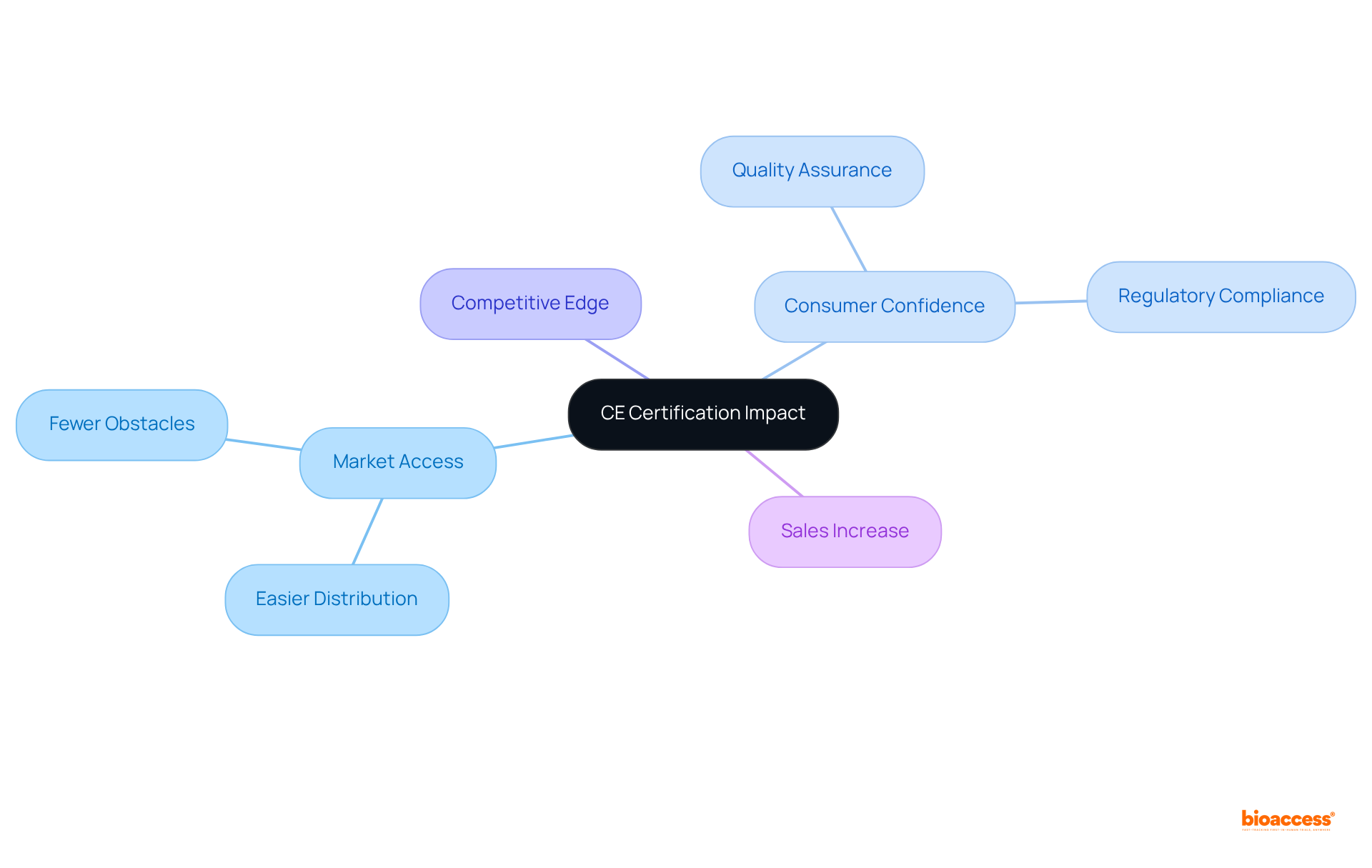
CE certification, or Conformité Européenne certification, stands as a pivotal marker for products within the European Economic Area, signifying adherence to essential health, safety, and environmental standards. This certification not only facilitates market access across EU member states but also strengthens consumer protection and quality assurance across various industries, from medical devices to consumer goods.
The origins of CE certification trace back to the 1980s, evolving through significant milestones such as the Maastricht Treaty. CE marking has adapted to meet the demands of new technologies and regulatory standards, ensuring that products remain compliant and trustworthy. The certification process encompasses key characteristics, including the necessity for conformity assessments and the preparation of a Declaration of Conformity, underscoring the structured approach manufacturers must adopt to achieve compliance.
Ultimately, grasping the significance of CE certification is essential for manufacturers striving to excel in the competitive European market. By ensuring their products meet these rigorous standards, manufacturers not only bolster consumer trust but also enhance their market position. As the landscape of regulatory compliance continues to evolve, remaining informed about CE certification will be crucial for businesses aiming to thrive in the dynamic marketplace.
What does CE certification mean?
CE certification, or Conformité Européenne certification, is a marking that indicates a product meets essential health, security, and environmental protection standards as required by EU directives.
Why is CE certification significant?
CE certification is significant because it allows manufacturers to sell their products freely across the European Economic Area (EEA) while ensuring consumer protection and maintaining high quality standards.
What types of products require CE certification?
CE certification is required for a wide range of products, including medical devices and various consumer goods.
How does CE certification benefit manufacturers?
CE certification acts as a 'trade passport,' enabling manufacturers to market their goods across EU member nations without hindrance.